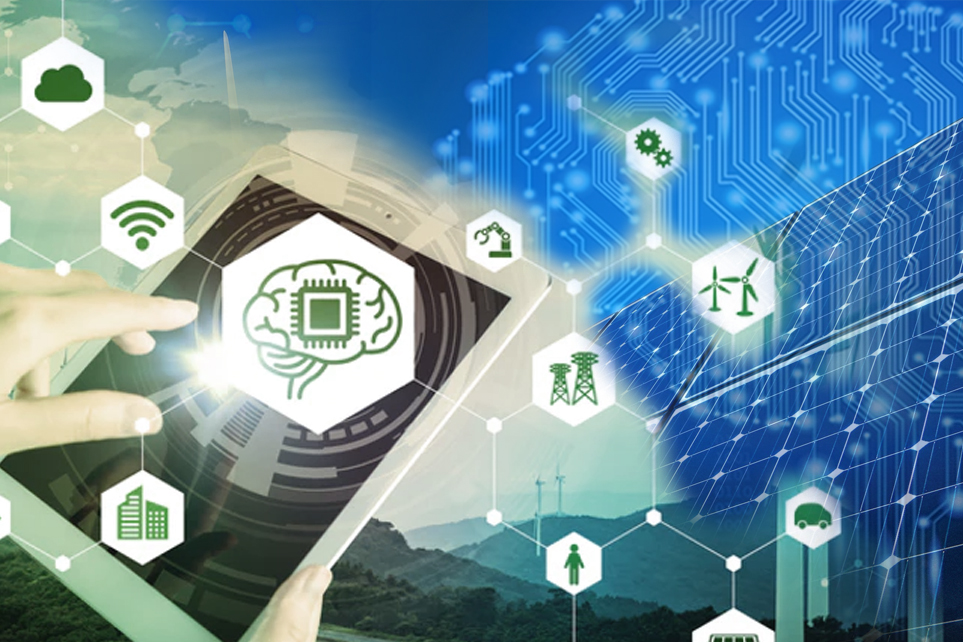Artificial intelligence and machine learning are rapidly transforming the utilities industry; energy, gas, water and waste management rely on smart devices for optimization of infrastructure and the supply/demand balance. Now smarter utilities—a whole ecosystem of technology driven, sophisticated marketplaces—are emerging. The energy sector and smart power grids, in particular, will benefit enormously from recent advances in ML and AI.
Let’s take a look at some examples:
Load Forecasting
Short-term load forecasts are vital for utilities. Machine learning could be used to forecast supply and demand in real time and optimize economic load dispatch. In the UK, Google’s DeepMind has teamed up with National Grid to predict supply and demand peaks and hopes to reduce national energy usage by 10%.
Yield Optimization
With AI, power providers can optimize generation efficiency with real-time adjustments across their assets. GE Renewable Energy’s “Digital Wind Farm” concept includes software that monitors and optimizes the turbine as it runs, increasing energy production by up to 20%.
Predictive Maintenance
It can be bolstered with drones for asset inspections, replacing time intensive and risky manual inspections. The drones are trained using deep learning algorithms to automatically identify defects and predict failures without interrupting operations.
Demand Management
It can be automated and made smarter with machine learning. In the UK, Upside Energy uses machine learning to manage a portfolio of storage assets to support the grid, while Open Energy controls devices with flexibility in their energy consumption to shift demand in real time. It is estimated that machine learning could be used to help unlock up to 6GW of demand-side flexibility which can be shifted during the evening peak without affecting end users.
Energy Theft
It is a huge problem in some developing countries, such as Brazil, where theft accounts for up to 40% of the electricity distributed. AI can be used to detect usage patterns, payment history, and other customer data that may signal irregular behaviour.
Energy Storage
Machine learning can be used to manage energy storage systems and broader energy ecosystems. For example, the new “Graciosa Hybrid Renewable Power Plant,” with its integrated 6 MW/3.2 MWh energy storage management system, can supply 1 MW of solar and 4.5 MW of wind power to the local electricity grid, reducing the island’s reliance on imported fossil fuels and significantly cutting down on greenhouse gas emissions.
On the retail side, AI can unleash market forces as well as transform the user experience:
Customer Insights
Machine learning applications could allow utilities to craft electricity prices that maximize their margins while minimizing customer churn. AI could be used to create individual offers and services to help utilities retain their most profitable customers.
Energy Trading
In this era of the prosumer generating their own renewable energy and sending the excess back into the grid, platforms are emerging to allow peer-to-peer trading between producers and consumers. As supply and demand continuously fluctuates, AI can be used to more quickly match producers with consumers. In the Netherlands, Vandenbron connects consumers with renewable energy providers.
Virtual Agents
These will revolutionize call centres, being able to respond to consumer queries and provide instant assistance. They will be able to automatically segment consumers based on service history and provide early warning of bad debts. The development of natural language technologies will eventually unlock the capacity to fully automate customer service.
Consumers can also benefit from AI:
Supplier Selection
Machine learning can help customers choose their energy retailer by learning about their preferences – such as energy generation type, how much they’re willing to pay and their consumption patterns – and then scanning the market for the most suitable offers. Lumator, using software developed at Carnegie Mellon University, does this and can also automatically make the switch without interrupting supply.
Consumption Insights
Meter data can be analysed to extract the consumption profiles of a household’s hungriest appliances and see how much each contributes to the energy bill. Bidgely takes this one step further. Their universal disaggregation algorithm uses machine learning and a database of over 50 billion meter readings from smart meters to extend the appliance profiling to homes without smart meters.
AI opens a wide range of exciting possibilities for utilities but the changes will not be simple. Early evidence suggests AI can deliver real value to serious adopters, but current uptake outside of the tech sector remains low. Few companies have deployed it at scale. The opportunities and rewards are waiting for those willing to take the plunge.
At AppleTech we have the experience and the expertise of building custom AI based solutions for all industries including Pharma. Contact us today to see your concept turn into a solution.

